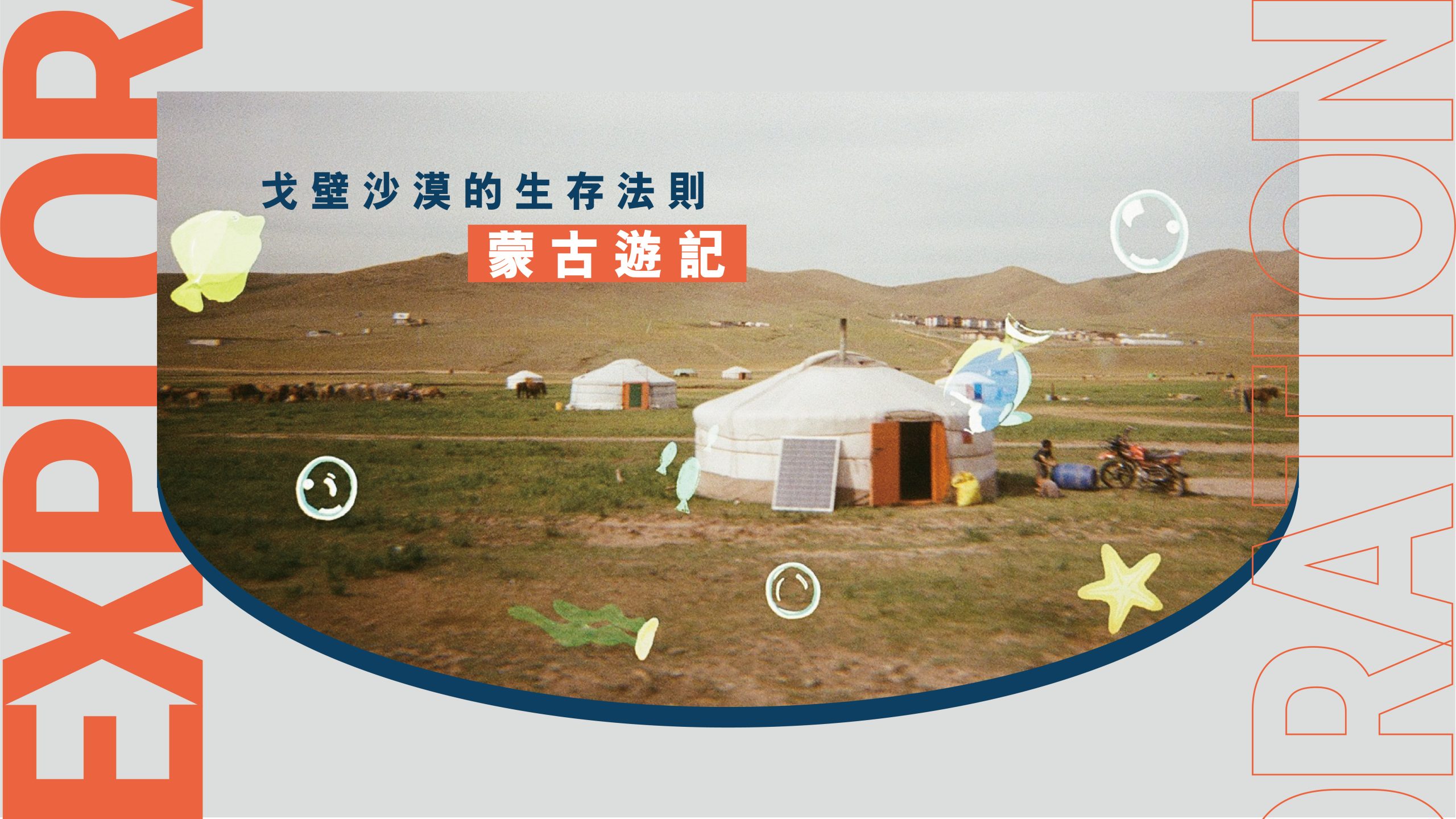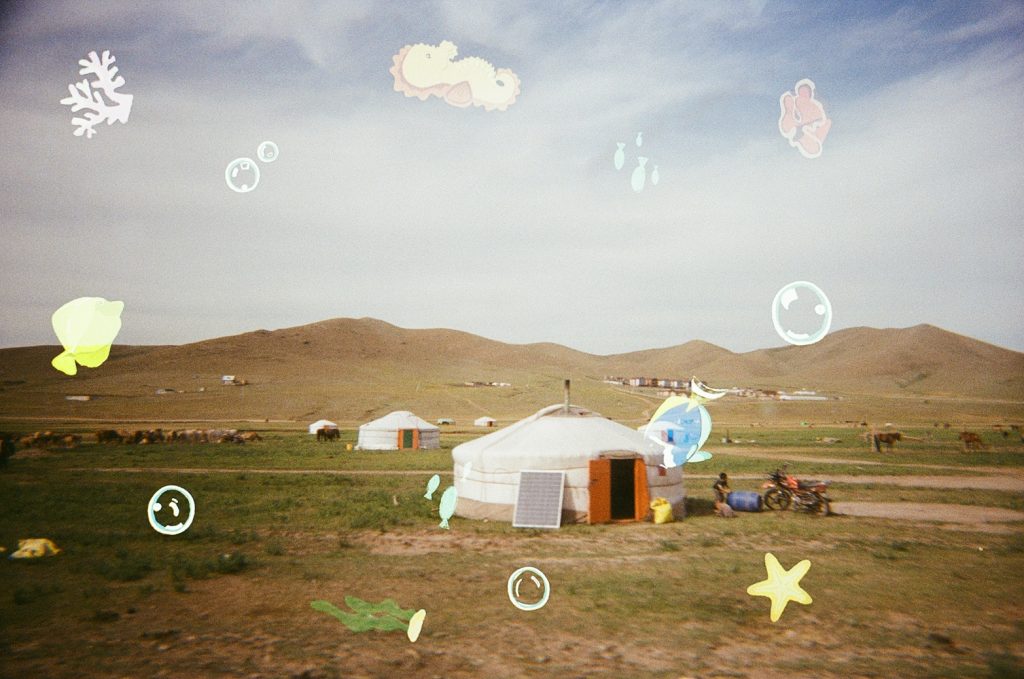
“What drove you to travel to Mongolia?” asked the airport staff on the day of our departure.
“To ride horses! To ride camels! To eat mutton! To savor horse milk wine!” we, a group of six, enthusiastically replied. Envision ourselves galloping on white horses across the boundless grasslands under the shimmering stars… Well, it may sound a bit whimsical, but beyond that, Mongolia offers excellent value for travel (especially when compared to places like Tokyo, where spending seems endless), making it an alluring choice. With a mere four-hour flight away, many Hong Kongers opt for a “quick getaway” to Tokyo during extended weekends, yet only a handful consider a “flash visit” to Mongolia. However, for those seeking an extraordinary and distinct travel experience, Mongolia emerges as a splendid option. Let me clarify, this is not the Mongolia you might be familiar with (Outer Mongolia and Inner Mongolia are distinct regions), I am referring to the independent nation of Mongolia.
Embarking on a drive southward from the capital city, Ulaanbaatar, to the Gobi Desert consumed nearly ten hours. As we traversed rough gravel roads, transitioning from urban outskirts to remote landscapes, from modern conveniences to elemental simplicity, it became evident that we were on the brink of entering a “limited domain”: with limited internet access, water, electricity supply and basic restroom facilities… As urban dwellers, we needed to prepare ourselves mentally. Nevertheless, our hearts swelled with anticipation, for we yearned to embrace the unspoiled and unsullied beauty of Mongolia’s natural landscape, untouched by the perils of modern-day pollution.
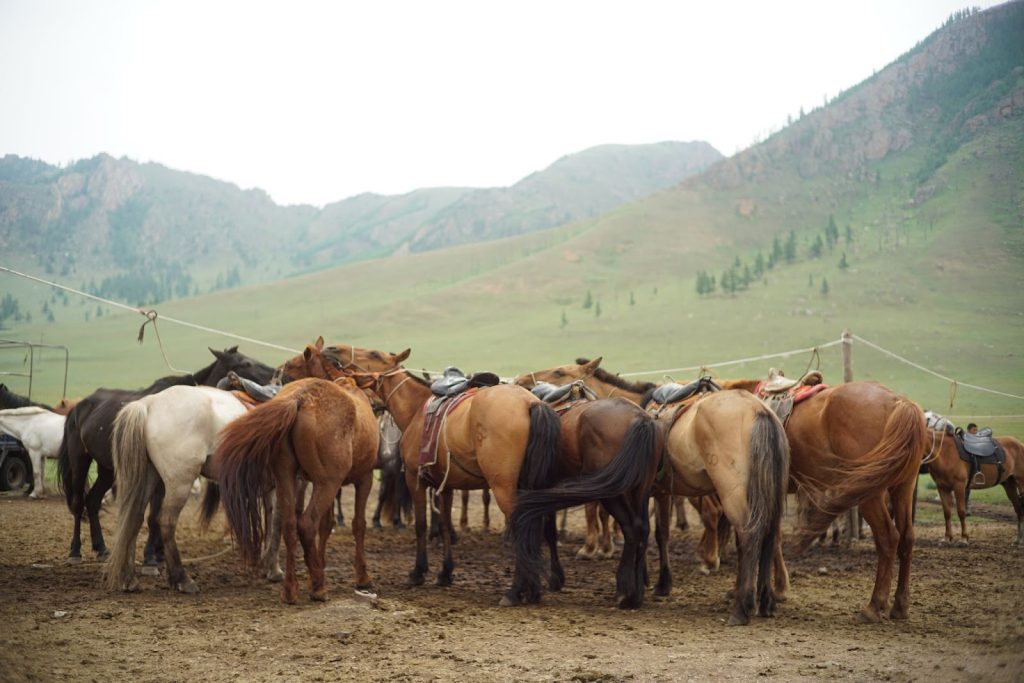
In late June, the Gobi Desert unfurls its arid, scorching expanse, engulfed in swirling sands and boundless stretches of yellow earth. In this land of scarce rainfall, horses, cattle, sheep, and camels graze on seemingly unyielding wild grass. With significant temperature fluctuations between mornings and evenings, the summer days stretch on until past 9 PM, basking in the sun’s lingering glow. Remarkably, 30% of Mongolia’s population still embrace nomadic or semi-nomadic lifestyles, demonstrating resilience in the face of the challenging environment. The essence of nomadic life, as described by the locals, involves migrating at least twice a year: seeking cooler, fertile terrains with ample water sources during the summer and finding warm, sheltered spots during winter, all while following the natural routes of their animals. Every year on July 11th or 12th, Mongolia comes alive with the vibrant Nadam Festival, a grand celebration primarily held in Dadal and Khatgal. This marks the peak of the travel season, offering visitors a unique opportunity to immerse themselves in the authentic nomadic culture of the vast grasslands.
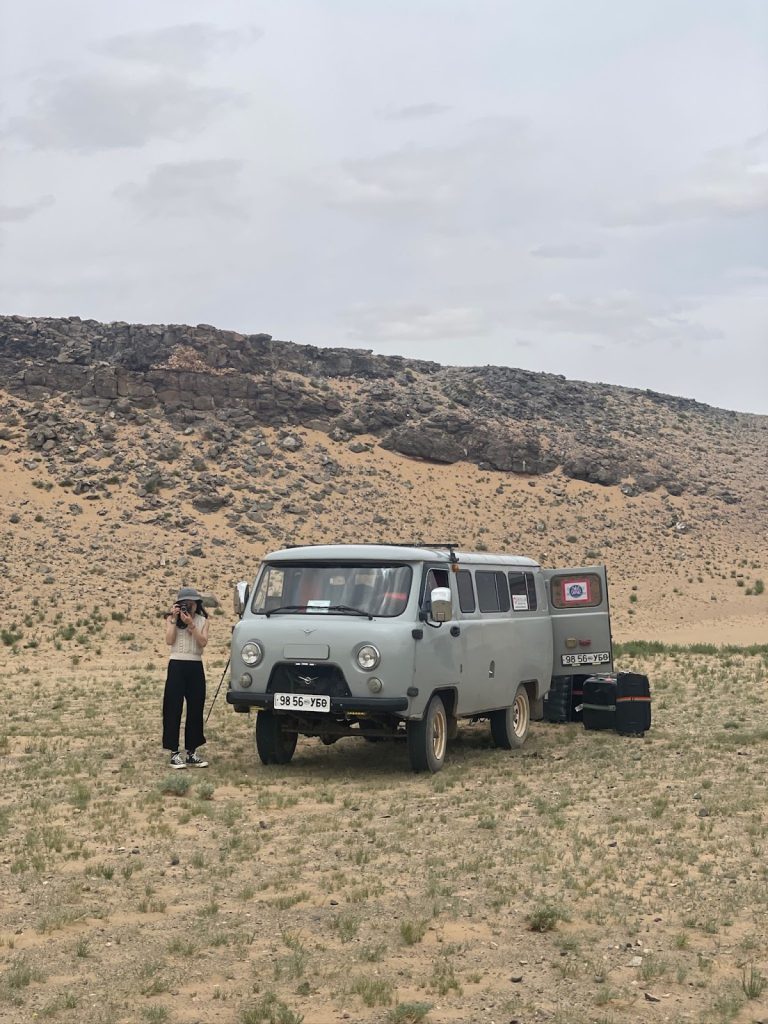
For an unforgettable adventure in the Gobi Desert, it is advisable to engage a local private guide. The itineraries vary, some lasting around six days while others extend over a dozen days. You can tailor your journey to explore different destinations and choose the level of “luxury” that suits your preferences. These packages typically include a skilled driver, three meals a day and accommodations. You might wonder, can you self-drive in the Gobi? Better not. Even experienced drivers may struggle with daily six to seven-hour journeys through often treacherous terrains without proper guidance. Local drivers are adept at handling robust, manual, four-wheel-drive jeeps from the Soviet Union era. As for the notion of “luxury”, it simply refers to the option to decide whether you want to upgrade accommodation to have running water and electricity or even flush toilets. However, keep in mind that even in the most opulent settings, traditional Mongolian yurts won’t come equipped with air-conditioning. Instead, you’ll savor the authentic charm of these unique dwellings, harmonizing with the spirit of the mesmerizing Gobi Desert.
Setting out on a five-day road trip (with a full day allocated for traveling to and from the outskirts), each day entails traversing long and arduous routes, navigating through mountainous terrain and crossing ridges, all to witness the awe-inspiring scenery before us. The immense effort invested heightens the sense of reward in every moment. Even if we manage to reach just one scenic spot after an entire day’s adventure, the magnificence of these landscapes makes the entire experience undeniably worthwhile.
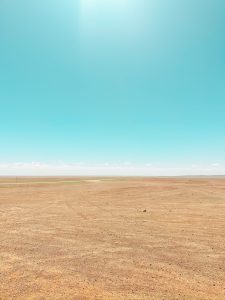
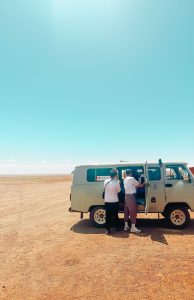
(The following itinerary is for reference only)
Day 1 – Baga Gazarin Chuluu (Small Rock Formation)
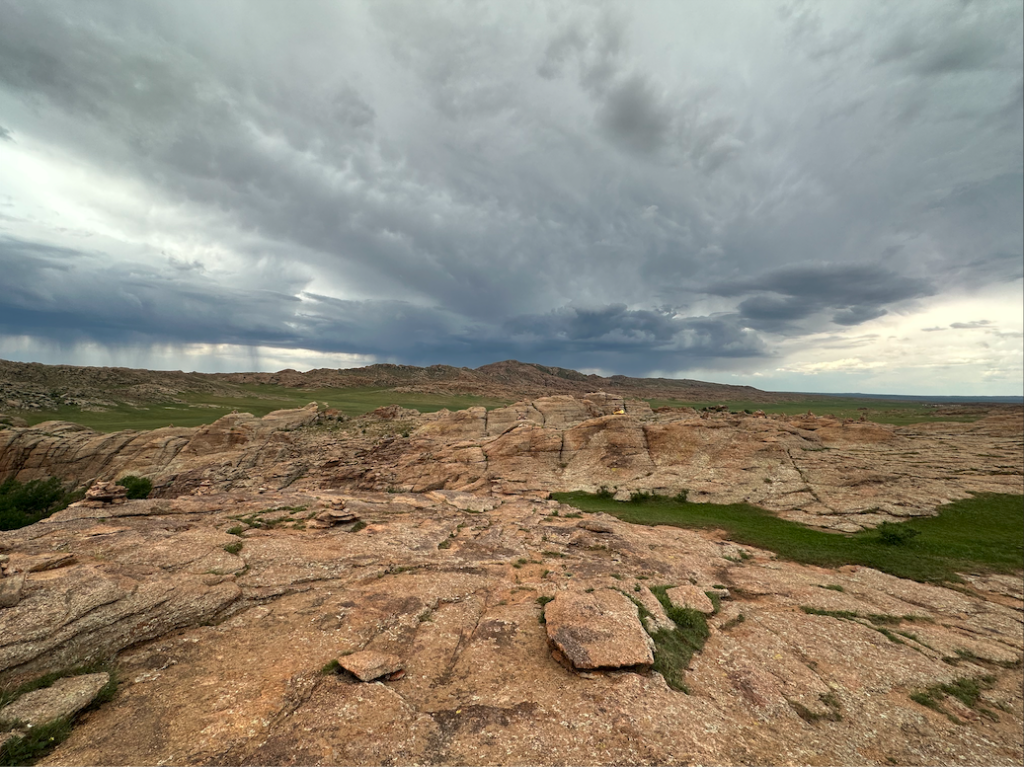
This small rocky mountain rises to an elevation of 1,768 meters and is formed of granite. In the past, monks constructed a temple in this area. The underground springs are regarded by the locals as “holy water.”
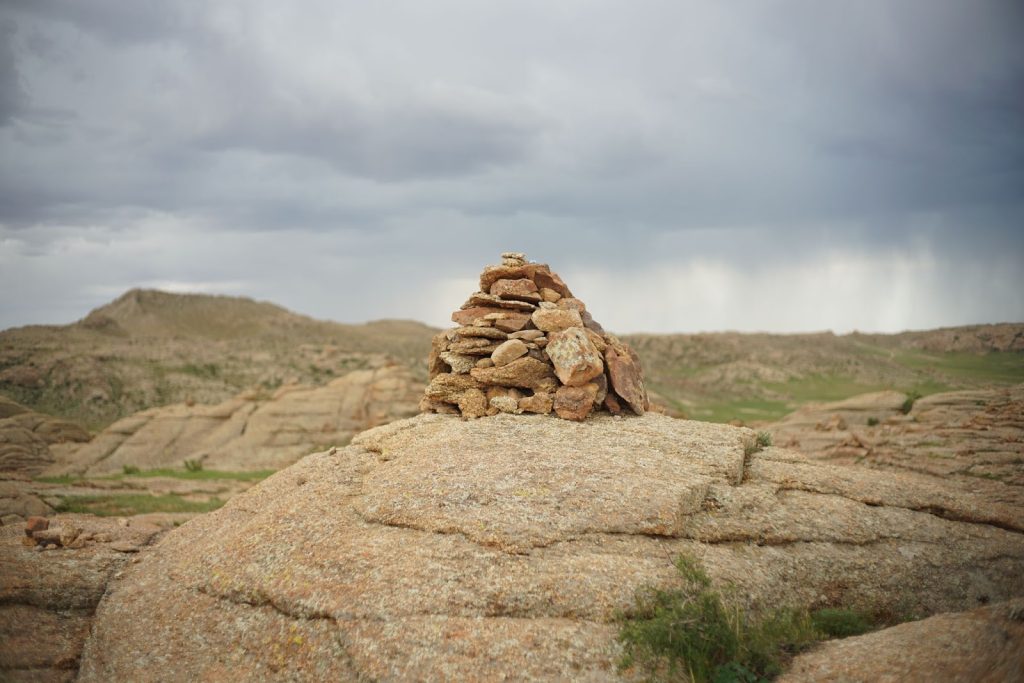
The small mounds of stones, called “Obo”, serve as places for prayers and blessings, representing the veneration of mountain and road deities, as well as seeking prosperity in agriculture.
Day 2 – Bayanzag (Flaming Cliffs)

Flaming Cliffs, once a haven for dinosaurs, witnessed a remarkable discovery in 1922 when American explorer Roy Chapman Andrews unearthed the world’s first dinosaur egg fossil here. Though dinosaur fossils may be elusive today, the expansive and awe-inspiring red sandstone sediment stretches endlessly, its arid beauty engulfed in a golden glow during the evening sun, a moment of brilliance that captivates the senses.
Day 3 – Khongor Sand Dune
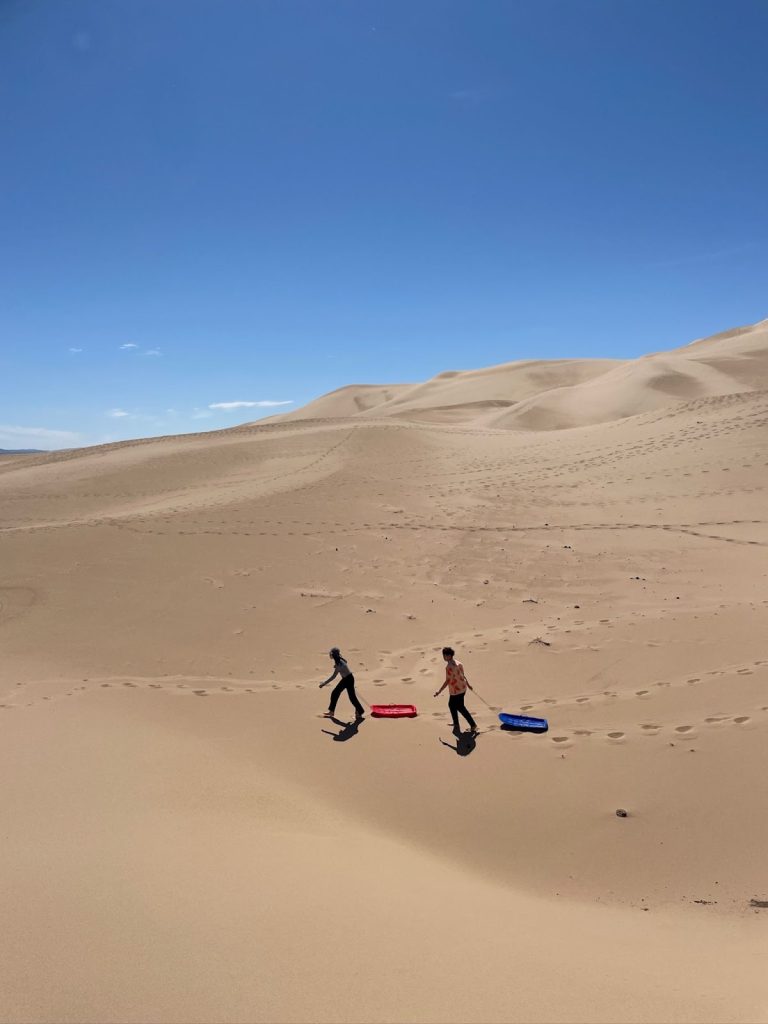
The unending expanse of sand dunes stretches smoothly, resembling a pristine blanket gently laid out. With each step onto the scorching surface, you instinctively recoil, yet a soothing coolness embraces your foot as you go deeper. Sliding down from the highest point of a dune, you leave behind a profound trail, a testament to your presence in the vastness of the Gobi desert.
Day 4 – YOL Valley (Ice Valley)
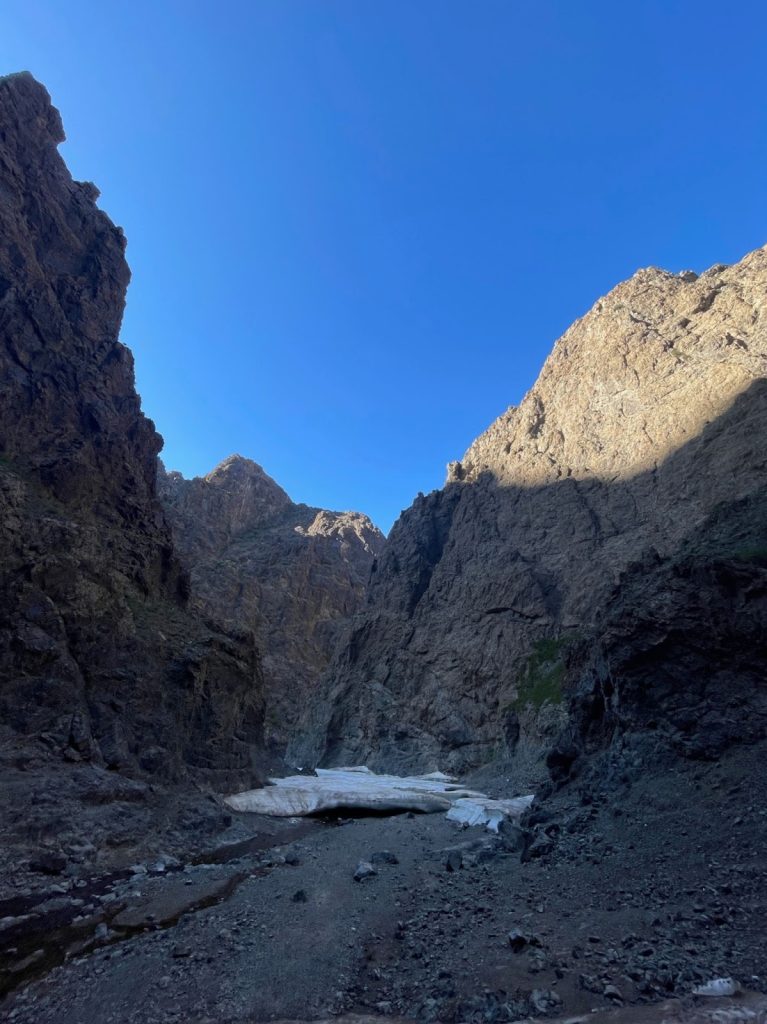
As you step out of the car, the temperature instantly drops by several degrees. Towering cliffs surround you on both sides, and within the narrowest point lies a river gorge frozen year-round, inviting you to walk upon the ice and explore deeper into the breathtaking valley. This unique desert glacier elevates this location to one of the Gobi’s top three attractions.
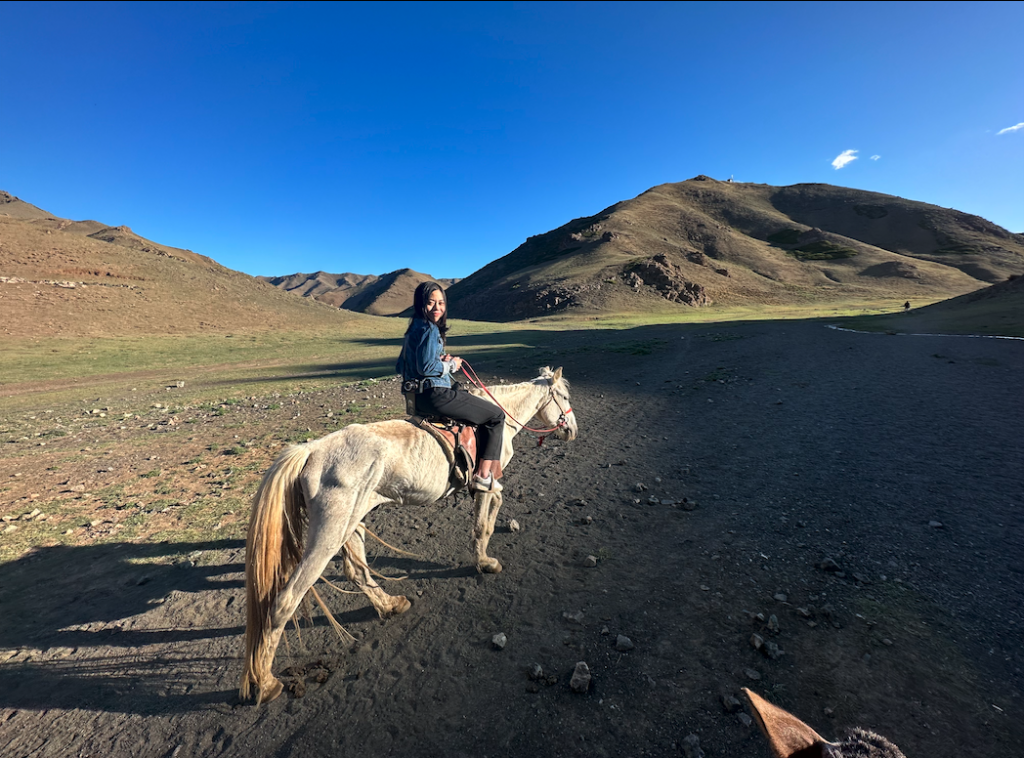
Guided by a young brother-sister duo, aged around ten, we rode on horseback through the enchanting valley. Their family operated the tourist business, and their confidence in leading us was evident as they engaged us in conversation. I couldn’t help but ponder how many times these two have journeyed along this mountainous path, back and forth, with other visitors.
Day 5 – Tsagaan Suvarga (White Stupa)
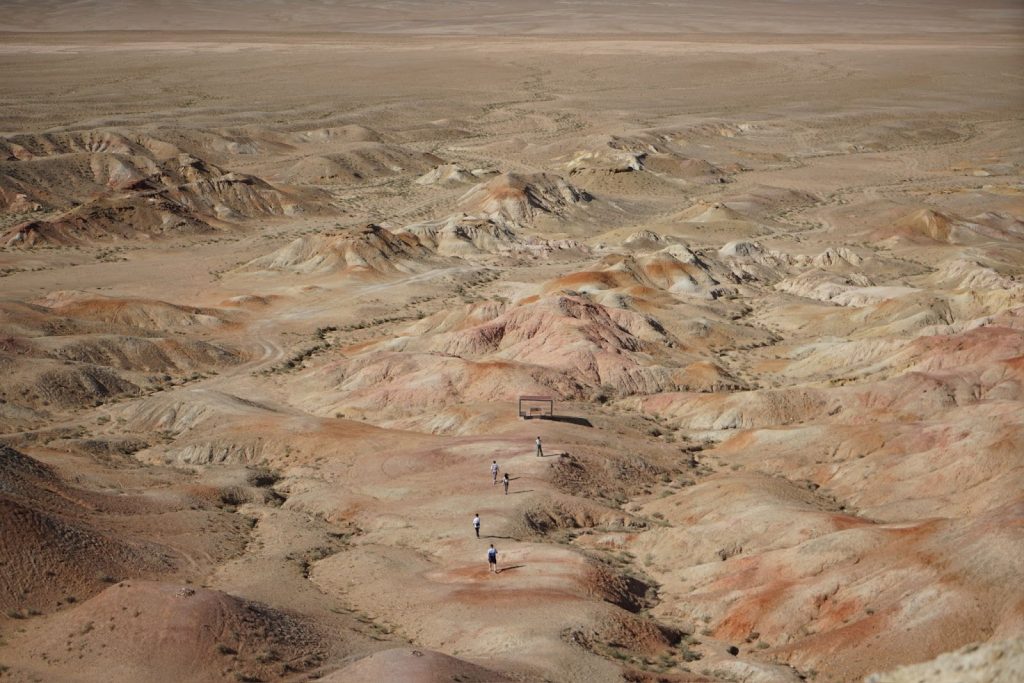
The boundless White Stupa, once submerged beneath an expansive ocean, underwent geological shifts that turned it into dry land. Over countless millennia, relentless wind and weather erosion sculpted the rocks, resulting in the breathtaking landscape we marvel at today. Exploring this “seabed” requires some climbing, but the views from both high and low points are strikingly distinct and truly gratifying.
While you can easily find photos and detailed information about the mentioned attractions with a simple Google search, there are a couple of intriguing insights that can only be truly experienced in person (based on my personal opinions and observations, though your experience may vary):
- Mongolia is renowned for producing Vodka, created by distilling fermented milk from various animals. The result is a smooth, layered, and distinctive flavor that, in my view, rivals or even surpasses the renowned vodka of neighboring Russia.
- Camels have a distinct odor, but surprisingly, you quickly acclimate to it. Despite their frequent excretions, riding a horse gives you a sense of unbridled freedom that is hard to match when riding a camel.
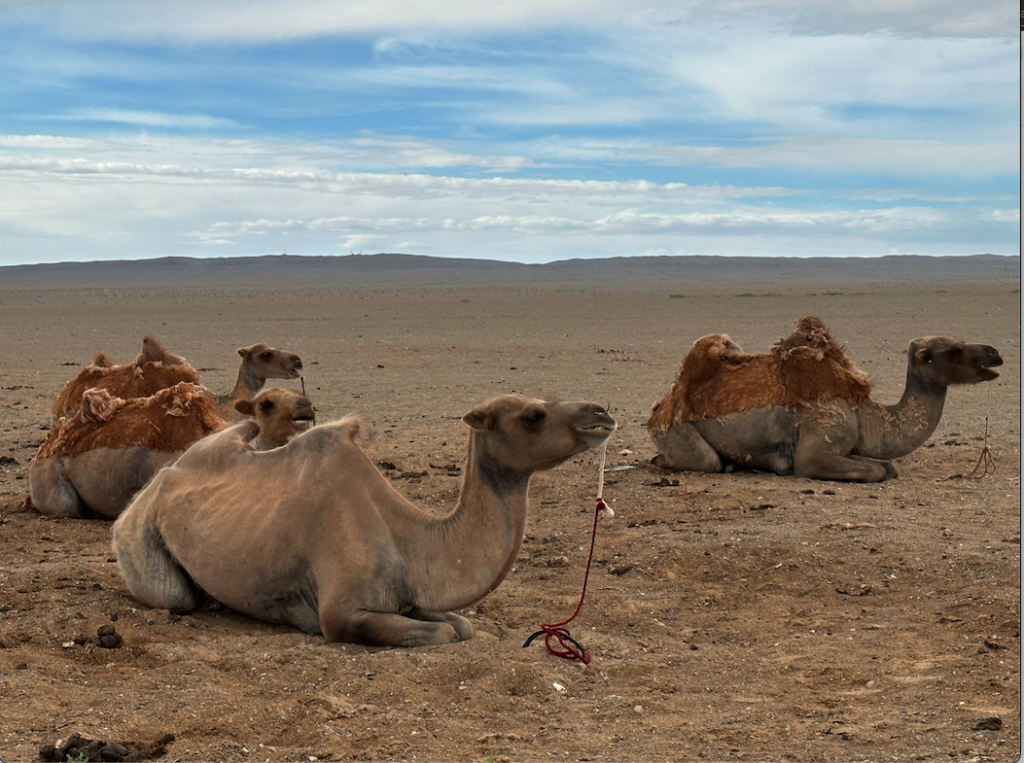
- The predicament of roadside restrooms, especially for women, is an unavoidable aspect of a road trip. At times, one may encounter makeshift cubicles built with wooden boards, leaving gaps in between, and below lies a seemingly bottomless pit. Perhaps due to the summer season, the strong smell of ammonia and the presence of flies make these facilities less than appealing. Given the option, I’d much rather seek relief behind a clean and airy sand dune, contributing to the creation of natural fertilizer – it’s merely a matter of acclimating to this rustic convenience.
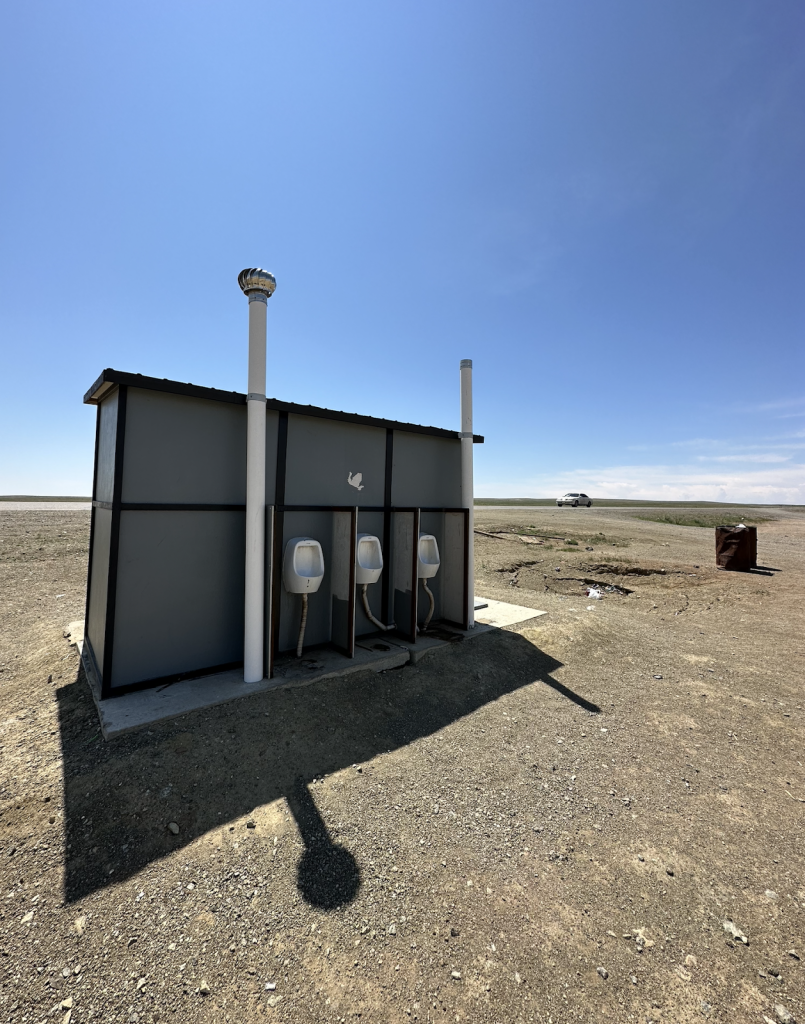
- The staple diet in Mongolia revolves around lamb and beef, with occasional options like fried noodles and steamed buns. However, for vegetarians, finding suitable meals can be quite challenging. During one of our rushed days, we resorted to a roadside picnic. Setting up a makeshift cooking spot at the back of the car, we used a gas stove to boil water and prepare instant noodles. The taste was an unusual mix of noodles and sand, creating a distinctive flavor.
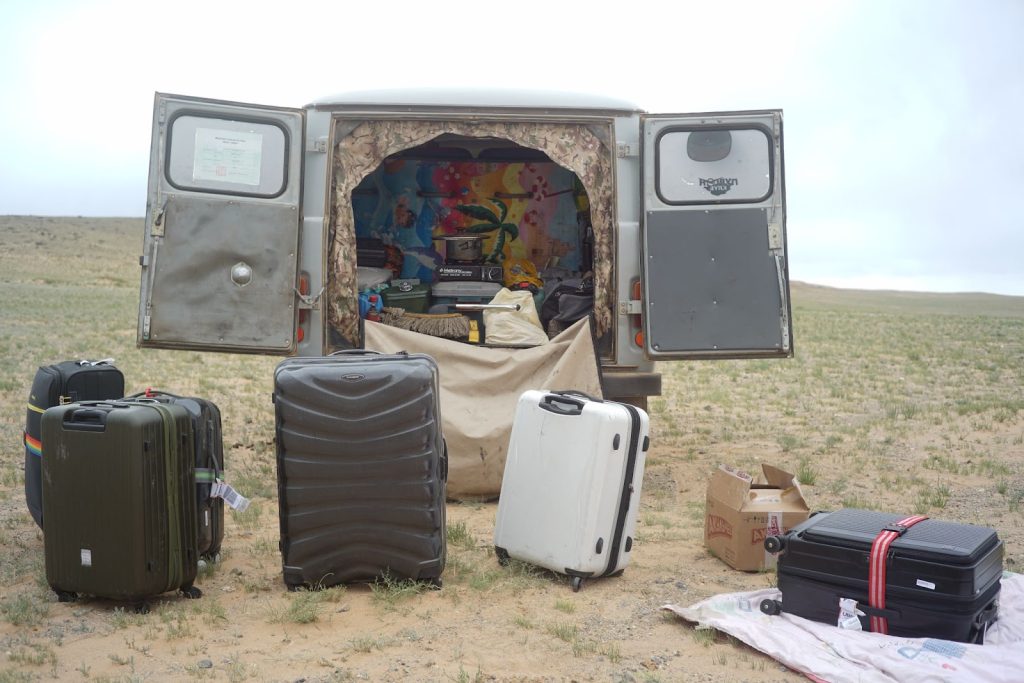
- In the rural areas, family-run businesses are the primary source of livelihood. Given the vast expanse and sparse population, daily commuting is impractical, leading families to adopt more practical approaches. Many families operate small restaurants within traditional Mongolian gers or manage ger resorts for tourists. During our stay, we were impressed by the active participation of children in these ventures, cheerfully helping with tasks like carrying luggage. Despite their tender age, they displayed remarkable maturity and responsibility.
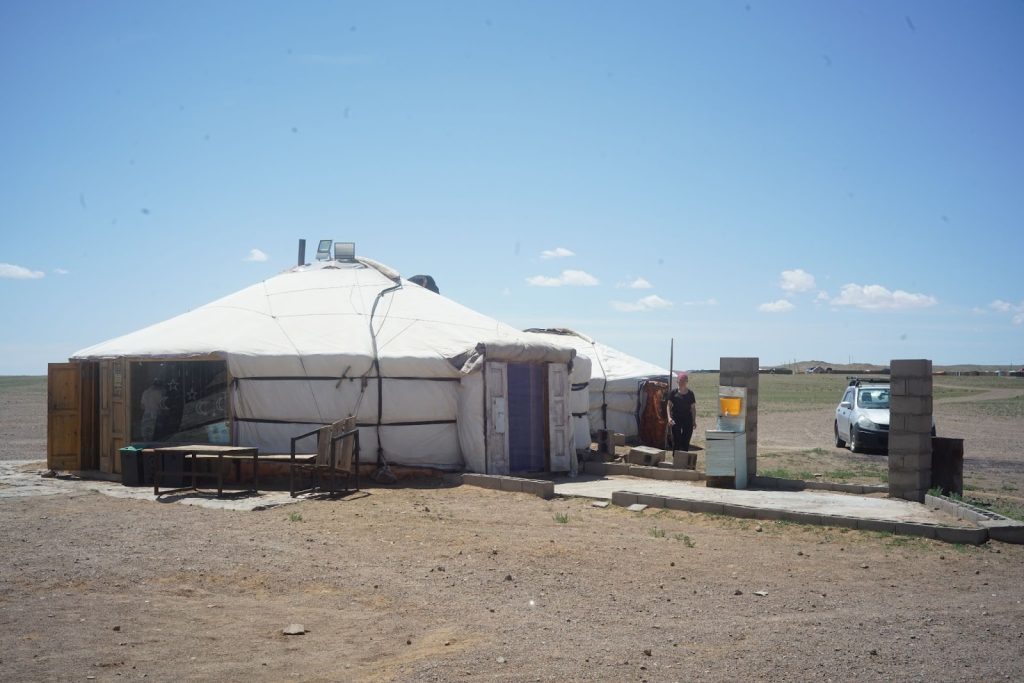
- In Mongolia, English proficiency is not widespread, and the Mongolian language’s pronunciation bears some resemblance to Korean, while its letters share similarities with Russian (though with distinct usage and pronunciation).
- The roles and status of women in Mongolia can vary significantly between urban and rural areas. According to the experience of a Taiwanese woman who married into Mongolia, in rural regions, traditional gender roles are still prevalent, with men primarily engaged in herding activities, and women responsible for household chores, childcare, and taking care of livestock. Conversely, in urban areas, there is a noticeable presence of highly educated women, and it is not uncommon to encounter unmarried women over the age of 30 who prioritize independence and do not actively seek a traditional family life.
Polish comes from the cities, wisdom from the desert.
Dune (2021) – Quotes from the Fremen
In this vast world, countless beautiful and exotic lands exist, where humans are mere specks in the grandeur of nature. Some remote places challenge you to overcome day and night temperature fluctuations, seeking shelter in the embrace of the earth. Above, the stars shimmer, while below, an endless wilderness stretches before you. Perhaps you tread on rugged mountain trails, devoid of streetlights, marching alongside migrating herds of cattle and sheep. In the sci-fi film Dune (2021), the Fremen (natives of the desert) impart their wisdom to the outsider Paul: “Rather than confront a storm, ship into storm.” Spending the night in a Mongolian ger, while the cold winds whistle outside, I felt as though I grasped a glimpse of the local people’s survival skills. I set aside my phone, disconnected from the internet, preserving its battery for the next day’s journey. With the promise of an early start, I chose to close my eyes and bid myself a goodnight.

